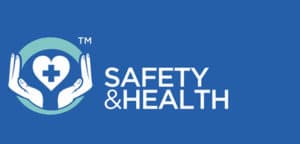 What exactly is a workplace safety attitude?
What exactly is a workplace safety attitude?
One definition states that a workplace safety attitude refers to an employee’s tendency to respond positively or negatively towards a safety goal, idea, plan, procedure, prevention or situation.
It’s a fact that your work attitude not only affects how well you do your job, but also affects how safe you are when you’re doing it. Attitude could be described as the spark that drives your behaviour.
Your attitudes are made up of:
• Emotions or feelings which are driven by your mental state at any particular time
• Your beliefs or opinions derived from your faith or upbringing
• Your inclination (or not!) for action, usually driven by your opinions
• Your positive or negative response to stimuli, giving rise to your actions
If you have a positive attitude, you tend to derive a great deal of satisfaction from your life and your work. Positive people seldom give up. They usually perform well in the workplace because they are motivated to maintain an open mind, are receptive to new ideas, pay attention to details and consider the possible outcomes of the ways in which they act. They develop safe work habits because, among other things, they are always looking for ways to improve.
There are many ways to identify those workers with positive attitudes, such as the ability to think first and only then to take action. These people recognise potential hazards before they have had time to cause problems, and then deal appropriately with them. Another clue to a positive attitude is the person being able to focus solely on the task in hand, particularly when machinery and equipment are involved.
These behaviours help to develop work habits that lead to a high degree of efficiency and organisation.
Positive workplace safety attitudes are represented by:
• attentiveness
• eagerness
• alertness
• carefulness
• task focused behaviour
• team-oriented co-operation
• seriousness
In turn, these attitudes lead to:
• Protection of the organisation’s equipment, property and workforce
• Prevention of all types of accidents and near misses
• Preparation for any emergencies
• Improvement of the work environment
• Maintenance of workforce morale
Positive workplace safety attitudes are essential for an accident free work environment. They result in high efficiency and quality, while at the same time lowering the cost of accidents, and raising employee morale, business profit and goodwill.
How can workers individually improve their attitude to safety? The EHS Daily Advisor suggests that every employee can take positive steps to improve safety attitudes by:
• Taking personal responsibility for their own safety and that of their co-workers.
• Paying attention to training.
• Following every step in every job every time.
• Knowing and following safety rules.
• Using required personal protective equipment.
• Giving work their full attention.
• Keeping an eye out for hazards and always asking, “What could go wrong here?”
• Putting personal feelings and problems aside while working.
• Urging their co-workers to follow safety procedures.
• Knowing what to do in an emergency.
• Asking questions about any procedure or precaution that’s not clear.
• Reporting any safety hazards they can’t fix.
• Saving fooling around for their personal time.
Once started, motivation to improve one’s attitude to safety will increase. There’s a reason – a million reasons – why it’s said that success breeds success. Progress might not be immediately evident, but over time the motivated worker will see how far they have come, and how their behaviours are being adopted by others.
Positive attitudes can lead to an even higher degree of efficiency and organisation by the workers:
• Volunteering for safety committees or as a safety leader
• Taking an active role in safety meetings and training sessions.
• Proposing safety improvements informally or through suggestion systems or safety meetings.
• Co-operating with safety inspections and monitoring activities.
• Setting the example of a good safety attitude for others, especially new employees.
It’s important to understand that communicating, co-operating and leading are skills that can be developed. We’re not born with those skills, although we may have acquired a basic understanding of working with others from childhood. As with everything, we go through an awkward learning stage while mastering the attitudes and skills. Eventually the attitude of never giving up will defeat any awkwardness. Nothing worthwhile is easy!
On the other hand, people with negative attitudes complain about everything, including having to practice safety. They are less likely to care about the desired quality of the job to be done or how they will do it. A negative work attitude can lead to unsafe work habits and accidents. It becomes all too easy to ignore the safety precautions that keep workers safe, thereby putting them at risk.
A negative attitude closes individuals down and makes them lose interest or unable to maintain pride in their work. Their actions become self-limiting. If a workplace is filled with negative attitudes towards safety, there will be an increase in production costs, turnover rates, and a reduction in employee safety, morale, quality, profitability and business goodwill.
There are many reasons why bad safety attitudes exist. Broadly speaking, carelessness is the biggest cause of accidents. Mishaps happen when workers have negative attitudes like these:
• Emotional acts or feelings which distract.
• Tiredness, slowing physical and mental reactions.
• Risk-taking, cutting corners or ignoring safety procedures.
• Recklessness with decisions, tools, machinery, chemicals, or work procedures.
• Selfishness, not thinking how one’s actions may affect others.
• Complacency, especially if the task is habitual and workers are under pressure
• Being afraid to ask questions because training and work procedures have covered a lot of ground- sometimes too much to remember.
• Bullying by superiors, causing employees to work in an unsafe manner.
Work safe organisations report that new and inexperienced workers are often seen to be particularly vulnerable to risk, as a result of:
• Not understanding the risks or consequences of the risks, or being overconfident.
• Not having the foundation skills required such as dexterity, intuitive understanding, love of tools, or problem-solving.
• Not having learnt the regulations or struggling to make sense of the regulations.
• Having a lack of real commitment to learning good practice.
• Being afraid to speak out for fear of being stigmatised, or losing their job.
• No-one on a site taking on the responsibility of role modelling good behaviours.
• Susceptibility to negative peer influence, e.g. learning to see near misses as a ‘laugh’.
This is when the attitudes of experienced employees become all-important. Research shows that older workers score high with leadership abilities, detail-oriented tasks, organisation, listening, writing skills and problem solving. Their greatest asset is experience, or their workplace wisdom. They’ve learned how to get along with people, solve problems without drama and call for help when necessary. They know where to focus their efforts to deal with unexpected problems and so prevent costly mistakes and accidents.
These skills make them invaluable as demonstrators of good work attitudes. They model desirable behaviours and follow the rules. It’s a no-brainer to suggest that new and inexperienced workers should be mentored by those with the right attitudes and skills.
Changes in workplace attitudes take time. Not everyone wants to help or be helped, and some need time and encouragement to alter their attitudes. Safety and attitudinal changes must be taken seriously in order to:
• Avoid accidents that can cause job-related injuries or other dangers.
• Avoid exposure to hazardous substances that can lead to serious illness.
• Comply with safety and health regulations.
• Comply with company work rules, policies, and procedures.
It might surprise some employers to learn that that research has found a statistically strong relationship between employees’ opinions about their workplace culture and actual safety outcomes such as the number of accidents, days away from work, total recorded safety incidents, and workday interruptions. Cultures that emphasise employee well-being and production quality rather than just bottom-line numbers are more likely to make safety a top priority.
There are eight cultural drivers that change attitudes. While they seem simple, they are crucial for building company morale and motivating employees to own the safety process.
• Communication. Employees want to be informed, and to understand what’s expected of them and how their job fits into the bigger picture. When they’re happy with the communication within their company, they become more engaged and have a better attitude toward safety.
• Senior management. When company leaders visibly demonstrate their commitment to safety, employees take notice and are more confident in their leadership, leading to fewer safety issues.
• Teamwork. Co-operation breeds safety, and teamwork provides mutual monitoring and support to make sure safety procedures are followed.
• Workload. The heavier the workload for your employees, the more it hinders their attitude and safety performance.
• Supervision. How employees feel about their direct supervisors not only influences their general enthusiasm for the job, but affects their safe work practices.
• Involvement. Encouraging your employees to take ownership of their work and help solve problems increases their motivation and engagement, reducing the likelihood of safety issues.
• Individual impact. When employees clearly understand the connection between their individual jobs and the company’s overall strategy, they feel more empowered and part of a team, leading to safer work practices.
• Respect and well-being. When your company culture emphasizes employee well-being, your employees are more likely to make safety a priority.
(OH&S)
Earlier, I described attitude as ‘the spark that drives behaviour’. If positivity is the foundation of superior performance, it is imperative that organisations do all they can to foster a culture
that rewards positive work attitudes.
Click on the icons below to find out about Safety & Leadership and Safety & Health.



